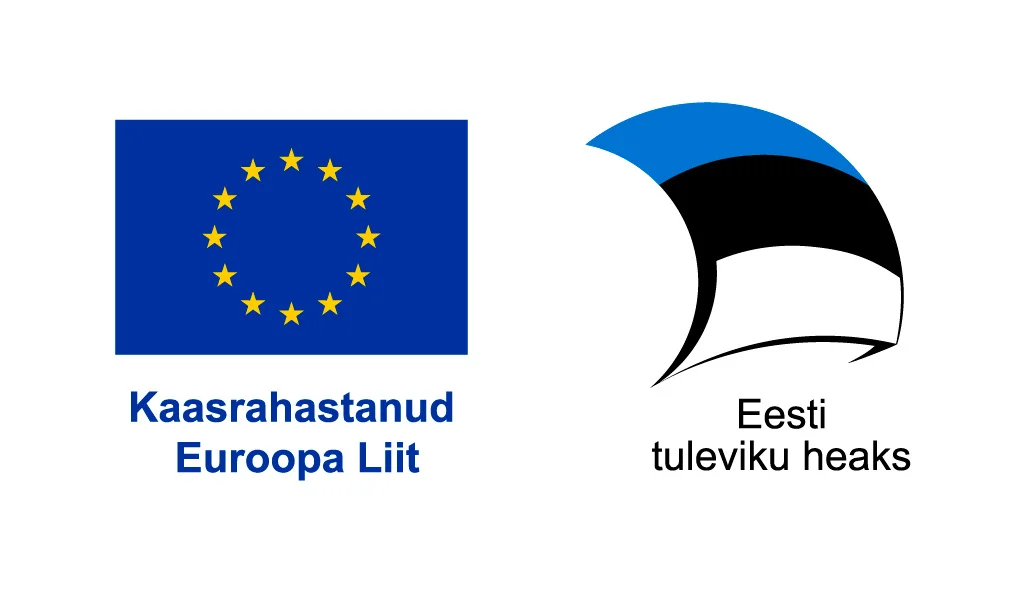Vaivara Sinimägi Museum, located on the battlefield with the most casualties in Estonia, is small, but despite its size, great things are done there. The most recent outdoor exhibit is an authentic tank.
The exhibition house located in the barn of the former Vaivara manor and the exhibition it contains are dedicated to the harsh battles of 1944. In addition to anti-tank cannons, minesweepers, handguns and uniforms, the soldiers’ personal items from boiler to felt boots are also on display. However, the largest exhibit is located in a tent behind the exhibition house, and for this purpose a tank T-34 was pulled out of Kurtna Mätasjärv twenty years ago.
The largest attraction of the museum is also the most valuable find of the Ida-Viru Military History Club Search. The Germans took the T-34 from the Russians as a trophey and painted swastika on it. When they were retreating, they sank a war machine with shells into the lake. Although the tank was pretty well preserved in the thick layer of mud in the lake, it took years for club members and effort to restore it.
Through the eyes of a military man and a housewife
Wartime can be traveled back in Sinimägi not only via exploring exhibits, but also through participation in a role-play. The museum invites families and groups of friends to take part in a time travel, which tells of the forced departure of people from Narva region during the war year of 1944 and the conscription of Estonian men to the German army.
The exciting museum program has been awarded the title of the best new adventure in Ida-Viru. I join one of the first groups to test it. On a warm summer day, Ivika Maidre, the director of the war museum, and his colleague Tõnis Tolpats, incarnate – one to a peasant woman and the other to a German training officer – to look back at the war winter of 1944 through the eyes of both ordinary villagers and soldiers.
„In January 1944, the Leningrad front started to move. German troops had been near Leningrad for three years, but then the front reached the River of Narva in two weeks, and large forces gathered there by February. In February 1944, our former Prime Minister Jüri Uluots had given a radio speech and said that all Estonian men were going to the front, because it was the Second War of Independence,“ Ivika Maidre gives a short introduction.
Then it goes straight to the point: time travelers are issued a call for mobilization and recruited into the army. The text of the mobilaztion order is more or less authentic, differing only in that the invited ones also include women who were not actually allowed on the front in the German army. As women make up the overwhelming majority in our group, a small concession is justified.
To war – in a nightgown
Future soldiers are welcomed by the officer responsible for training, in the person of Tõnis Tolpats, who, like Ivika, is a historian by education, and who invites everyone to go to the barracks. First of all, there is an acquaintance with the equipment that the German soldier should have been able to handle at the front.
„Unfortunately, no underwear is displayed, but the German soldier wore a strange long shirt, almost like a dress. It was warm under their clothes. In the barracks, it was used as a nightgown. The Germans didn’t use to wear footcloths, they wore socks.“
From underwear, we move on to the uniform. Although in 1944 the troops didn’t go to the front in a uniform designed by Hugo Boss, however, it was worn in the support units, and it is exhibited here. „It was the last beautiful uniform, then all armies came up with a mottled uniform, which wasn’t such a good example. They also started wearing low hats and helmets.“
In more detail, Tõnis Tolpats stops on one of the soldier’s main features – the helmet.
„When such a modern steel helmet was introduced, the number of head injuries decreased by 80 percent. It was identified in the First World War: the unit that used helmets suffered far fewer head injuries. Think about how much debris moves in the air: stones, pieces of wood. Of course, it also protected against smaller fragments and stray bullets. This helmet has an optimal weight. They tried heavier ones that held the bullets, but they didn’t justify themselves as soldiers tended to throw them away.“
Ladies’ weakness for beautiful things reveals when they touch a stylish backpack of a German soldier, similar models remain in fashion to this day. Ivika Maidre is baffling with a question: why is it covered in calfskin? To keep your back warm? To make it look from above like a calf is coming? To use instead of a pillow?
„Exactly, first of all, to put it under your head if necessary, but another reason is more important: calfskin protects against getting wet.”
At first, such a small rucksack should have contained a spare ration and spare shoes. But the war dragged on, and was replaced by a simpler and larger backpack: made of fabric, easy to manufacture and with increased capacity. Even now people go for berries with such backpacks.
Untold stories
Continuing the brainstorming, Ivika Maidre says that the history of 1944 is not only the story of soldiers, but also of local women and children who had to flee from the war.
„The population of our parishes left in January, February, and especially after the March bombing of Narva. People were afraid for themselves and for their family, – Ivika continues, adding that the mood was not hopeless after all. – Many of those who left at the beginning of 1944 considered their departure temporary.“
As it turned out, the population of the North-East of Estonia did not come back.
„In connection with the construction of a uranium enrichment plant, local residents were deprived of the right to get a residence permit. How do you allow people who were against you in the war to access a secret facility? New people arrived, for whom there were no signs of a country. Everything was in ruins after bombings, there was no local population: Soviet geologists and builders came and rebuilt everything. It was a wonderful life, because is seemed that nothing used to be here before. No matter that there had been life before the big Exodus happened, but there were no people who could tell about it.“
And what about Süvalepa Meta, who lived in Meriküla and who is embodied by Ivika Maidre in the role play? The young woman did not escape her death regardless of the fact that she was a June communist.
„It is wrong to think that everyone was against the Soviet power. In fact, there were Estonians too who thought that the happiness of the working people was coming now. Meta did not run away, because the Red Army was her army. She was waiting for it. When the Red Army assault landed here on February 14, only the old men and Meeta with the baby in her arms remained in Meriküla. But ’a la guerre comme a la guerre’. The soldiers were told in advance: the Estonians were cooperating with the Germans, they deserved no mercy! No one asked Meeta what she believed. She was killed along with the baby.”
According to Ivika, terrible images of the murder of an innocent child and mother appeared in the newspapers, and today it is known that the same fate was shared by the olds.
„The fate of the assault troops was also mournful. From 400 people who landed, only 4-7 crossed the railway and road. The rest were killed or arrested. This operation was far from success and there is nothing to talk about. In memory of Meeta and those who shared her fate, there is a stone with an inscription saying that they died at the hands of the fascist conquerors. Think of grimaces of history! Why can’t we set up a detailed explanatory text? Because in Meriküla, it probably won’t last three days.“
But what we can and should do is tell untold stories, which is exactly what Sinimägi Museum in Vaivara does. It returns human faces to history. After all, history appears not only in numbers, it is the history of human destinies.
SIRLE SOMMER-KALDA








